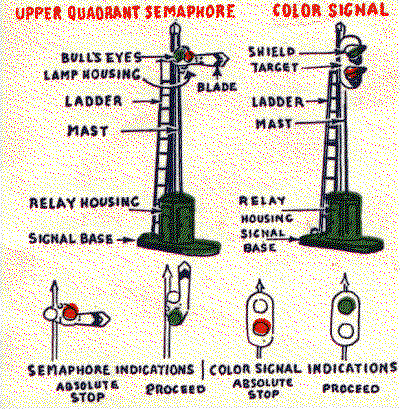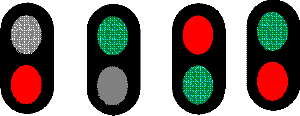
Copyright 2000 by T. Sheil & A. Sheil All Rights Reserved
Railroads use special lights to help engineers run trains. These lights are signals which tell an engineer how to ride on the track ahead of him. In some ways, they are like traffic lights.
The engineer cannot see what is on the tracks miles away from him. He would not know if he can go faster, or if he should slow down or stop. He needs help. The railroad helps him by using light signals along the tracks. These make the engineer's job safer, and allow more trains to run.
The picture below shows two kinds of signals, the semaphore and the light.

The semaphore (SEM - a - for) uses an arrow with a light on it. When the arrow is down, its light turns red. That means STOP!
When the semaphore is up, the light is green. That means the track is clear ahead, and the engineer can keep going.

The Color Signal can tell more. Here is what the colors mean:
Plain Red: STOP
Plain Green: KEEP GOING
Green over Red: SLOW! Be ready to stop at next Red signal!
Red over Green: STOP, then GO. Be ready to stop at next red signal.
Now you know how signals work. These are not the only kind of light signals. Some railroad used different colors and lights. Each railroad chose the one it liked best. The light signals here are the ones that were used by most railroads in the days of steam locomotives.
Have fun: think of ways you can signal when playing with your trains!